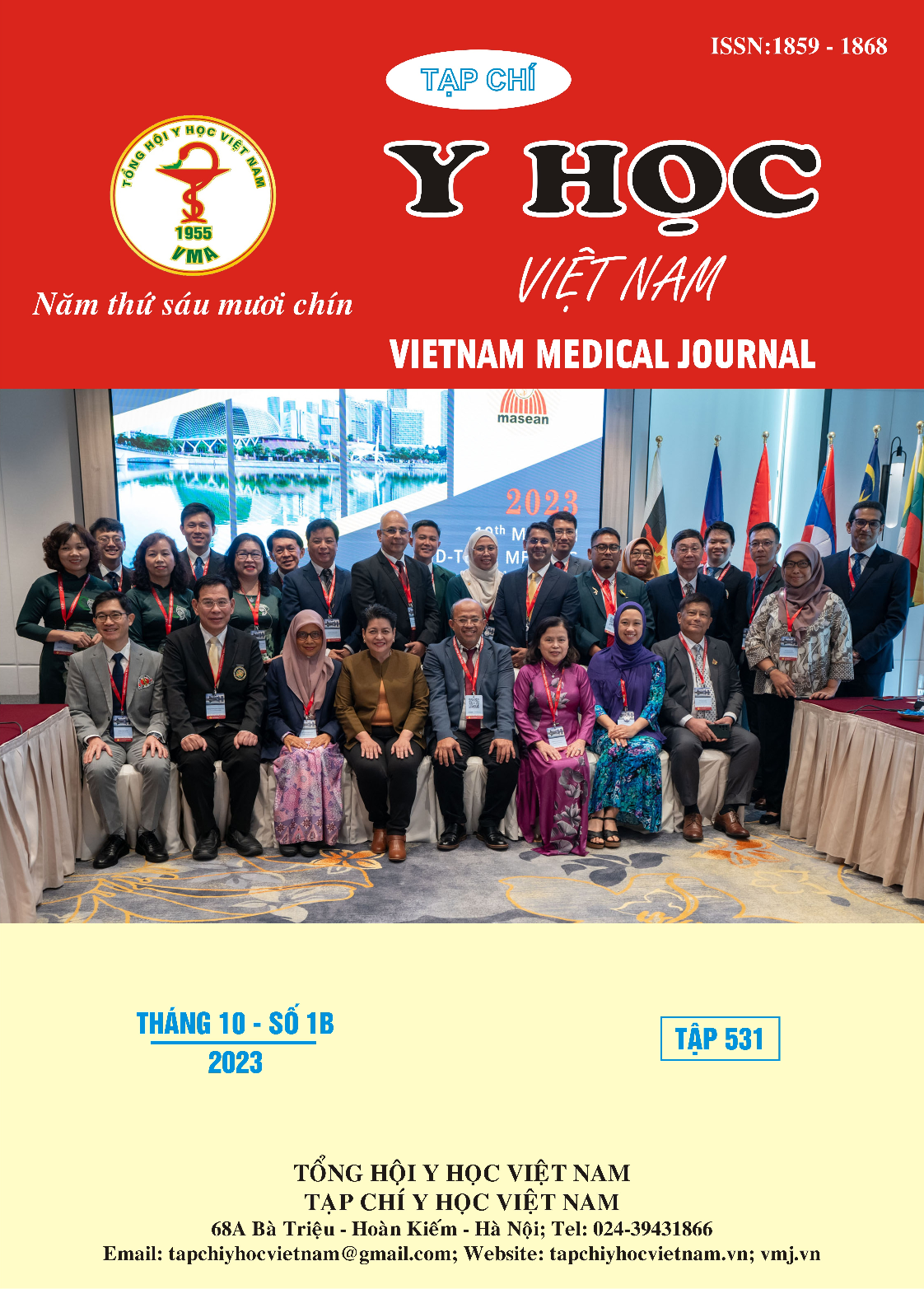CLINICAL FEATURES, SUBCLINICAL, AND SOME FACTORS ARE ASSOCIATED WITH HIGH GASTROINTESTINAL BLEEDING DUE TO PEPTIC ULCERS IN PATIENTS RECEIVING ANTIPLATELET DRUGS
Main Article Content
Abstract
Objectives: To investigate clinical and laboratory characteristics of high gastrointestinal bleeding in patients using antiplatelet drugs. Methods: Cross-sectional description of 52 patients who used antiplatelet drugs at Bach Mai Hospital from August 2022 to May 2023. Patients with clinical manifestations of high suspicion of gastrointestinal bleeding were performed endoscopy for diagnosis and treatment. All patient information is collected in the research medical record. Results: The single and dual antiplatelet groups were similar in age and sex. The dual group had a higher history of gastrointestinal bleeding (88.9% versus 73.5%), blue skin, and pale mucous membranes in 100%, higher than the single group (76.5%), p<0, 05. There were no differences in other clinical symptoms and laboratory tests between the 2 groups. Regarding endoscopy, the dual group mainly had low risk (61.1%), without intervention (83.3%), and treated with blood transfusion (89.9%). The single group was mainly at high risk (55.9%), requiring intervention (38.2%) and treatment with blood transfusion (67.6%). There was no difference in Lanza, Rockall, Glasgow-Blatchford scores between the two groups. Conclusion: High gastrointestinal bleeding due to peptic ulcer disease has similarities in clinical, laboratory, and endoscopic features between the single and dual antiplatelet groups.
Article Details
Keywords
High gastrointestinal bleeding, Gastroduodenal ulcer, Antiplatelet drugs.
References
2. Swan D, Loughran N, Makris M, Thachil J. Management of bleeding and procedures in patients on antiplatelet therapy. Blood Reviews. 2020;39:100619.
3. Sanders DS, Carter MJ, Goodchap RJ, Cross SS, Gleeson DC, Lobo AJ. Prospective validation of the Rockall risk scoring system for upper GI hemorrhage in subgroups of patients with varices and peptic ulcers. Am J Gastroenterol. 2002;97(3):630-635.
4. Harris J, Pouwels KB, Johnson T, et al. Bleeding risk in patients prescribed dual antiplatelet therapy and triple therapy after coronary interventions: the ADAPTT retrospective population-based cohort studies. Health Technol Assess. 2023;27(8):1-257.
5. Mengsun H. Nghiên cứu ứng dụng bẳng điểm rockkall trong phân tầng nguy cơ xuất huyết tiêu hóa do loét dạ dày tá tràng. Luận văn Thạc sĩ y học. Hà Nội, Đại học Y Hà Nội; 2016.
6. Nguyễn Đức Ninh. Nghiên cứu đặc điểm lâm sàng, cận lâm sàng và một số yếu tố liên quan đển xuất huyết tiêu hóa cao do loét dạ dày, tá tràng ở bệnh nhân dùng thuốc chống huyết khối. Luận văn chuyên khoa cấp II. Hà Nội, Đại Học Y Hà Nội; 2021.
7. Tsai TJ, Lai KH, Hsu PI, et al. Upper gastrointestinal lesions in patients receiving clopidogrel anti-platelet therapy. J Formos Med Assoc. 2012;111(12):705-710.
8. Galusko V, Protty M, Haboubi HN, Verhemel S, Bundhoo S, Yeoman AD. Endoscopy findings in patients on dual antiplatelet therapy following percutaneous coronary intervention. Postgrad Med J. 2022;98(1162):591-597.


